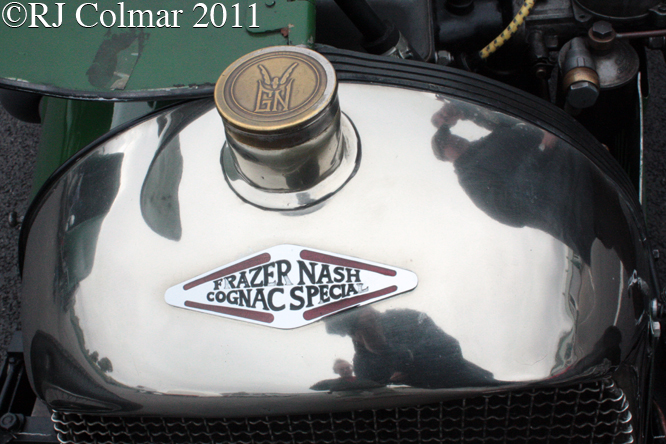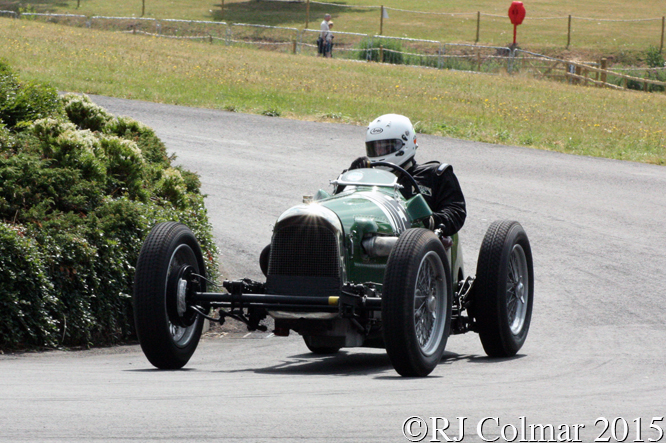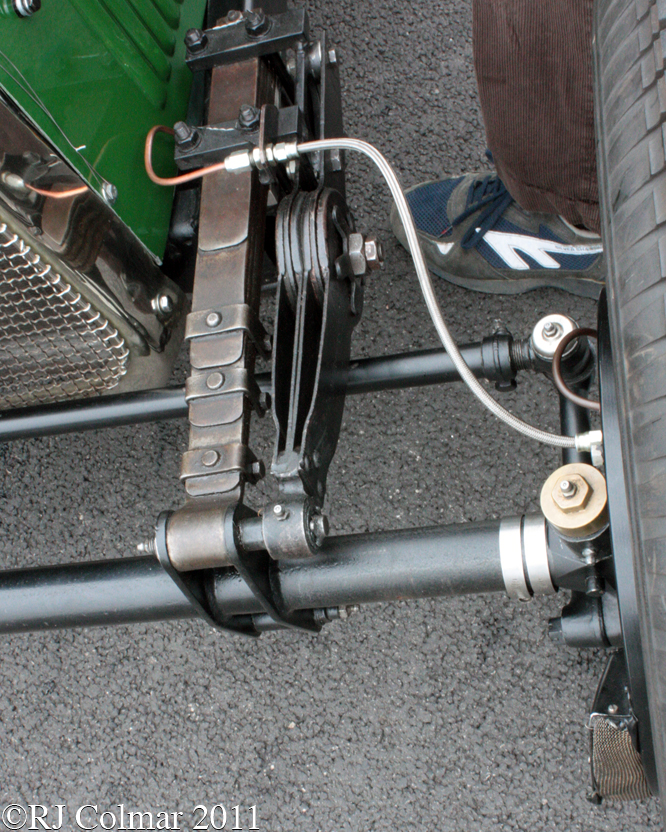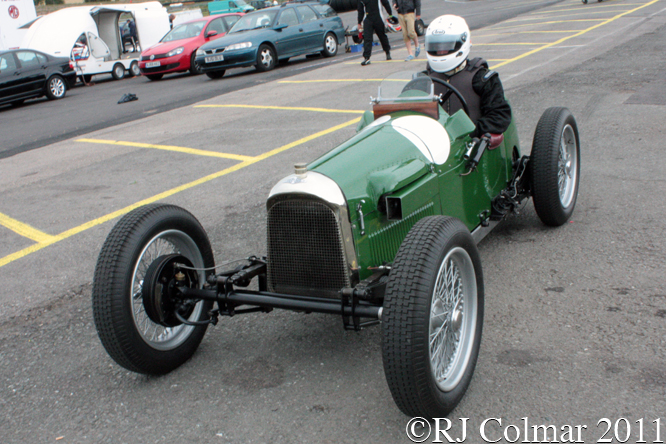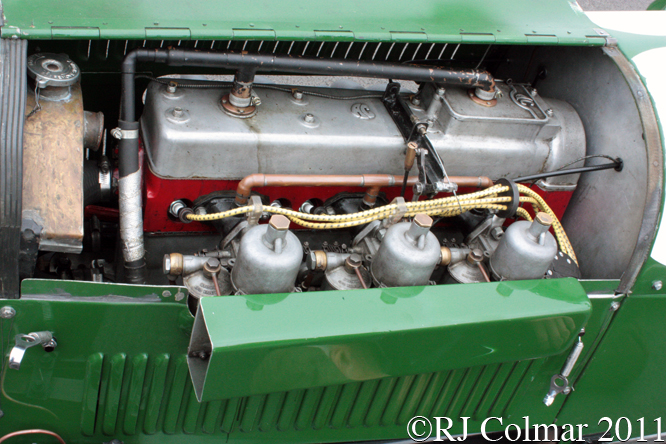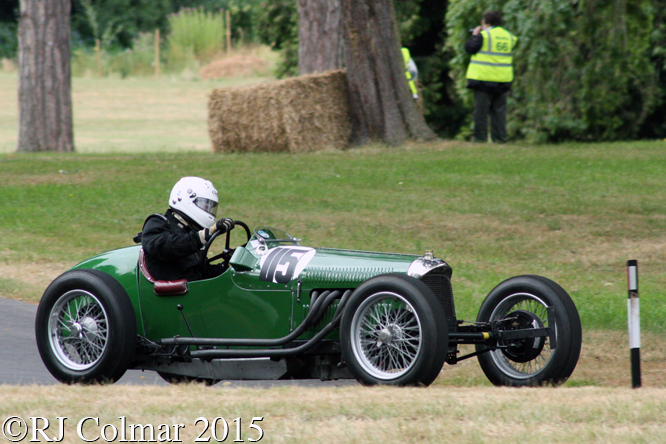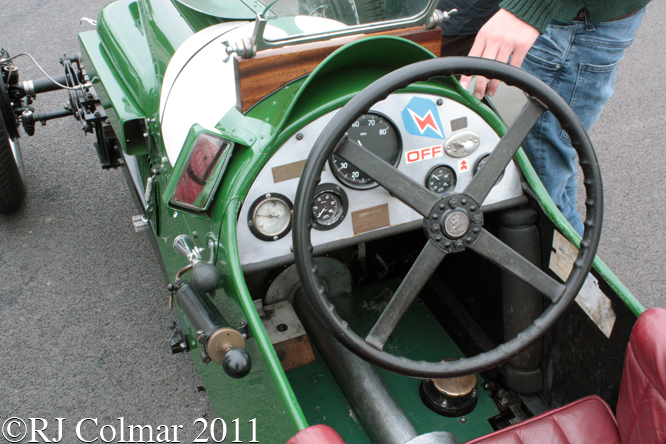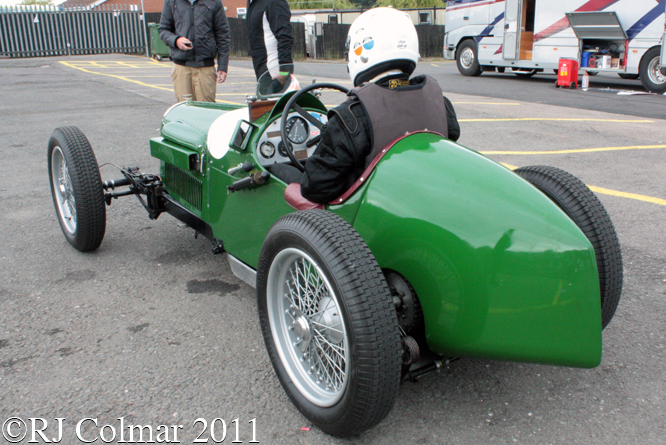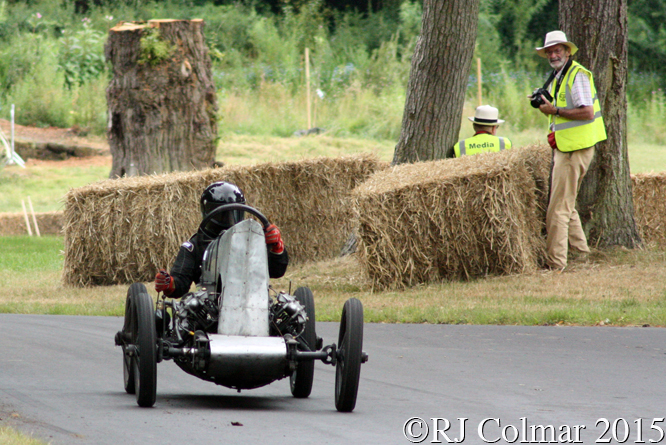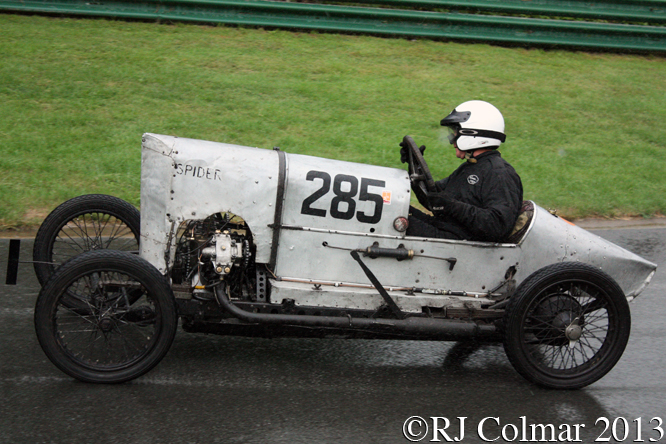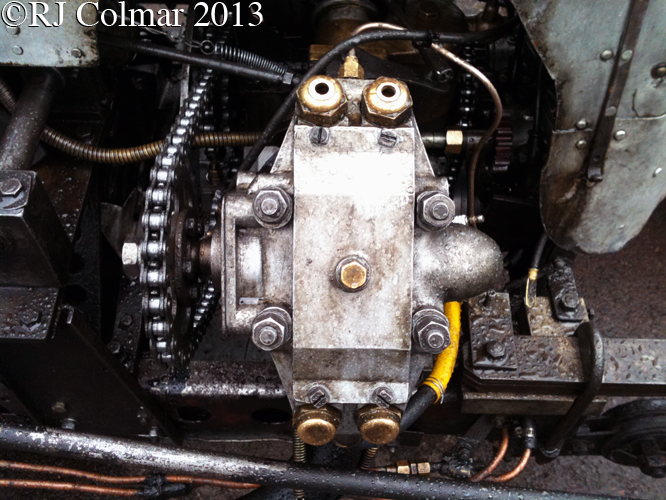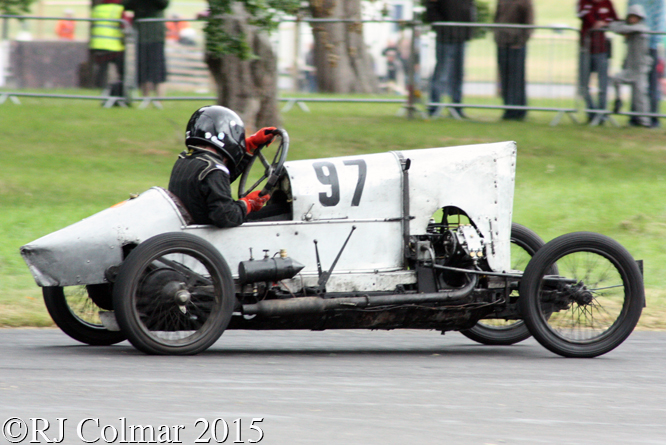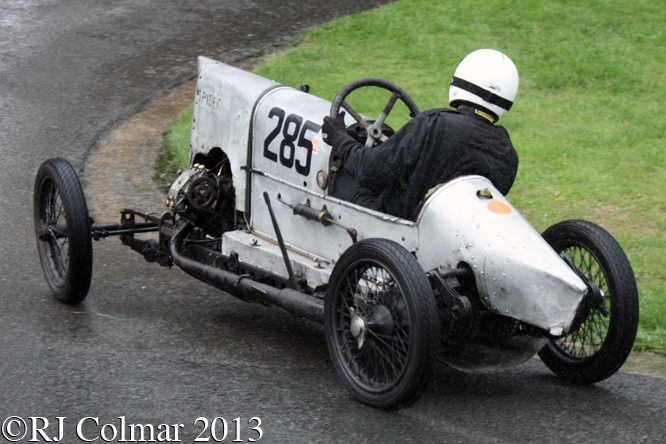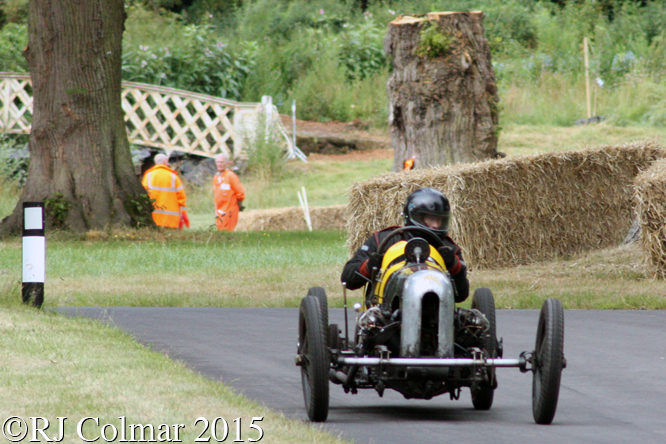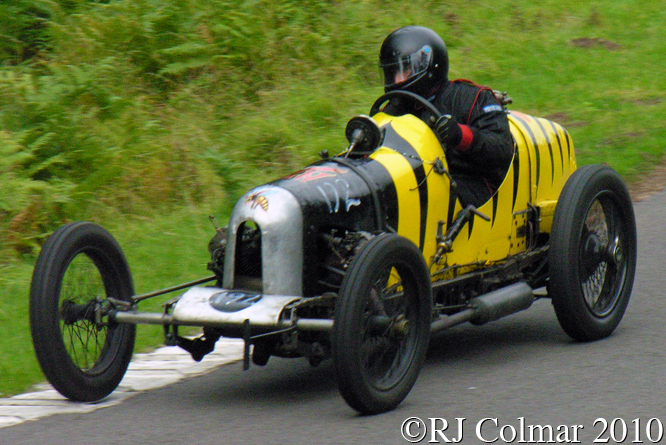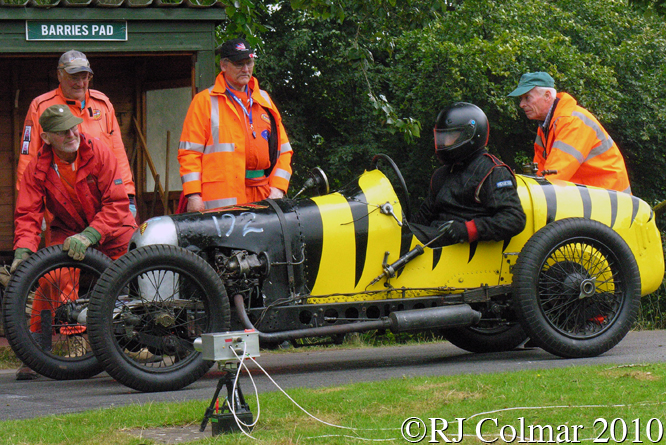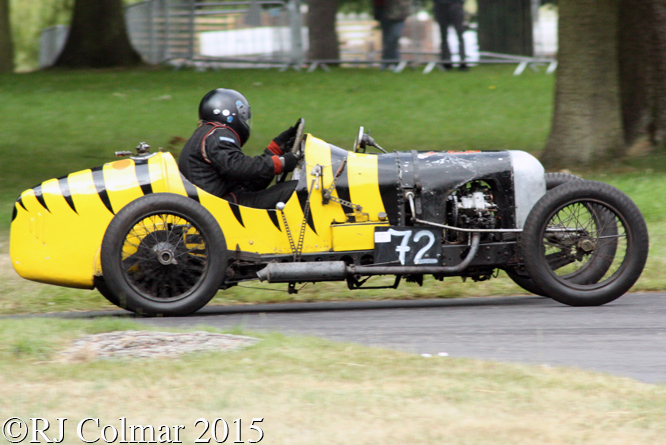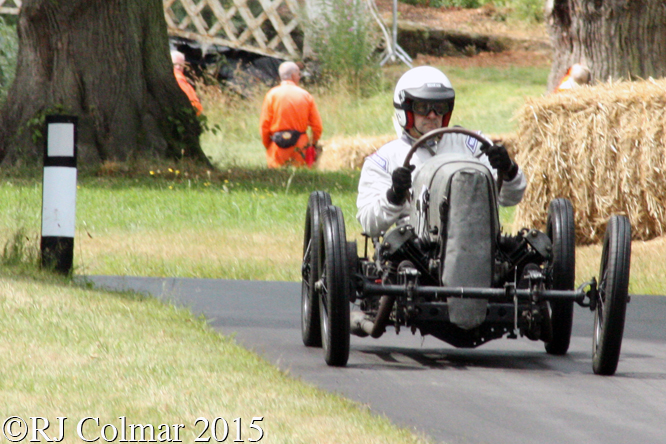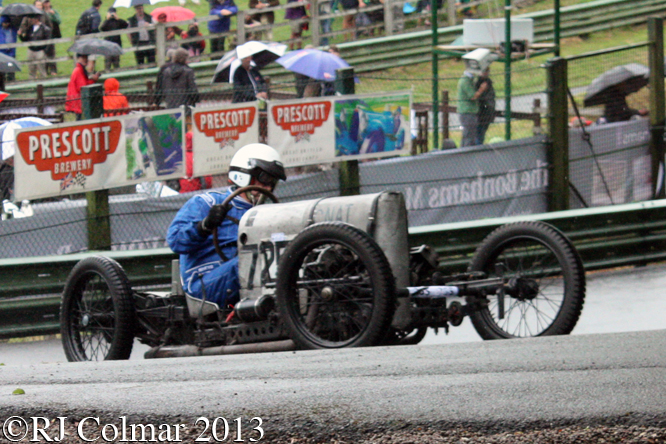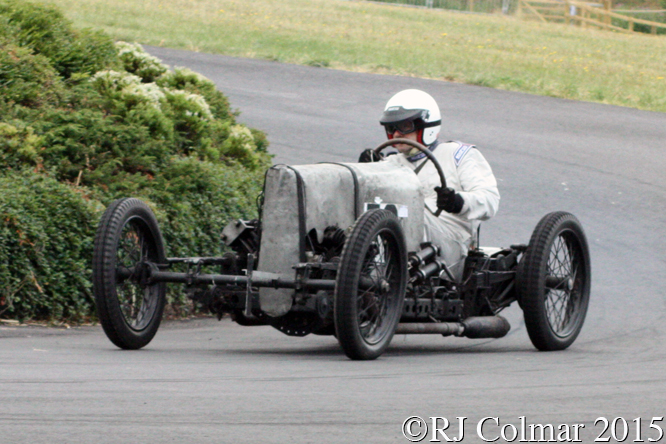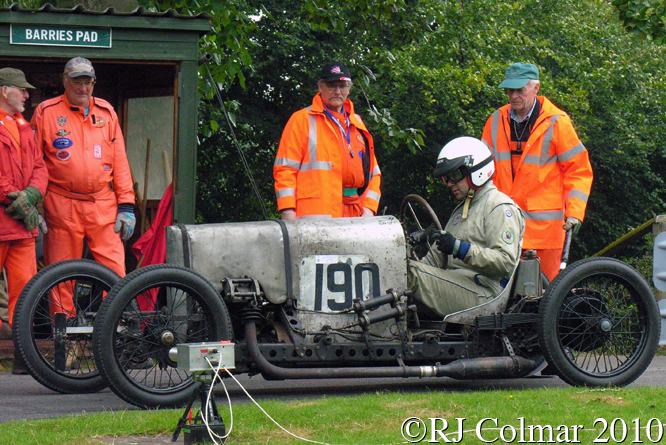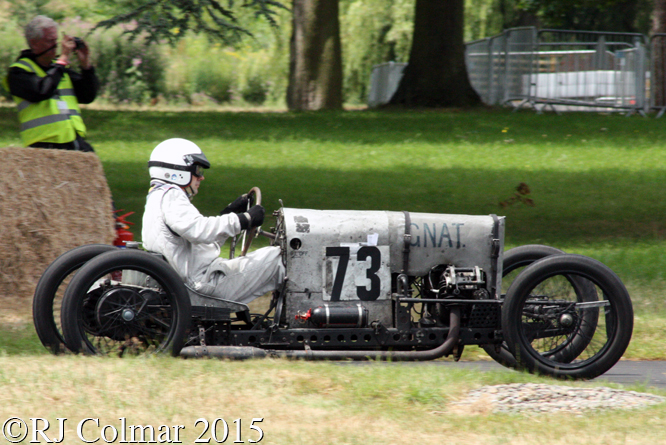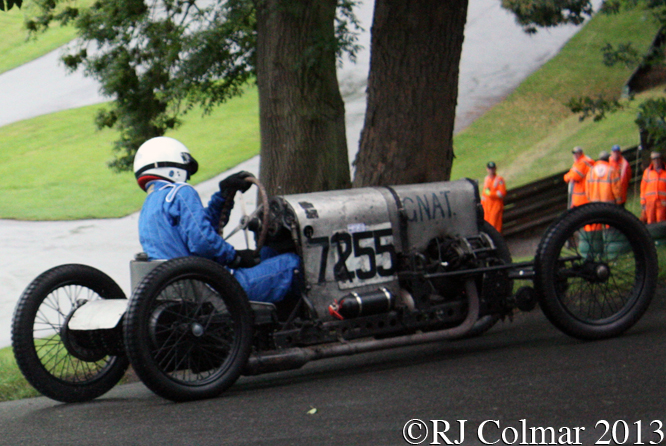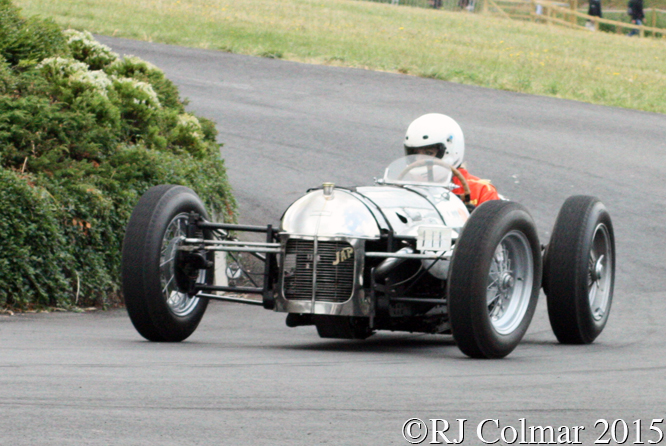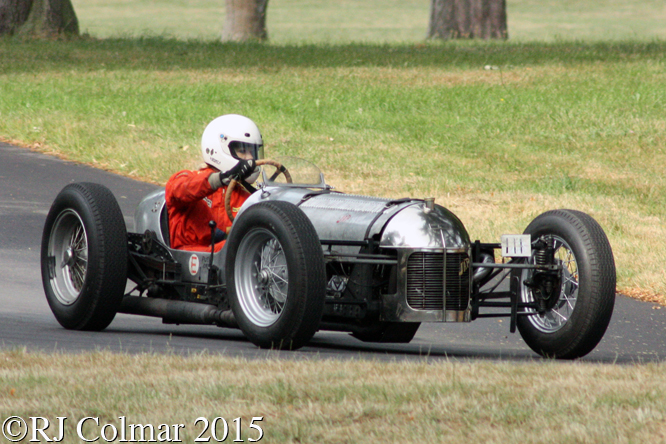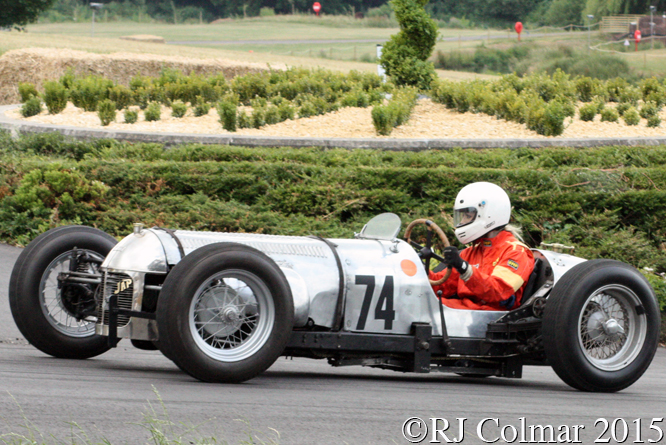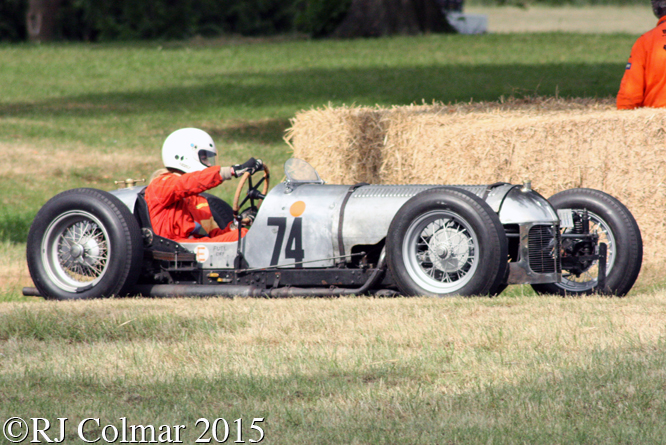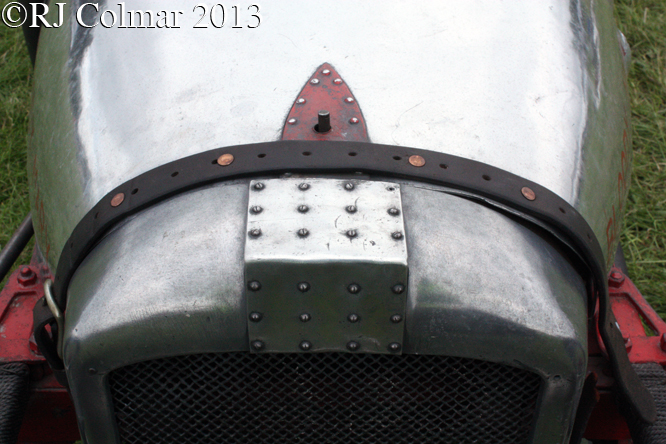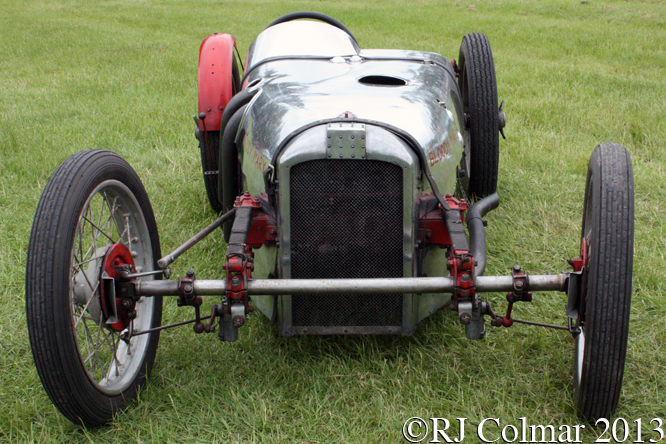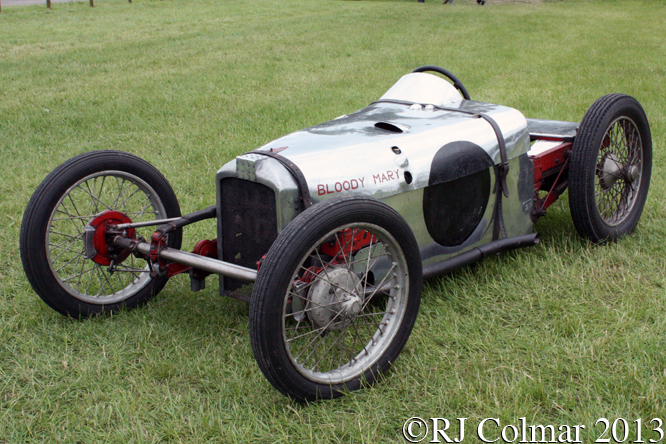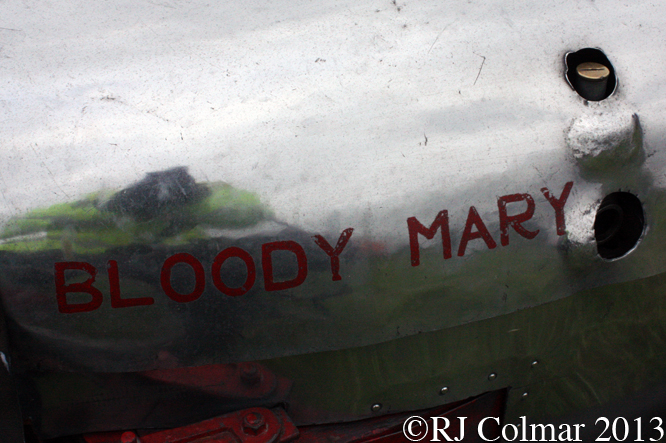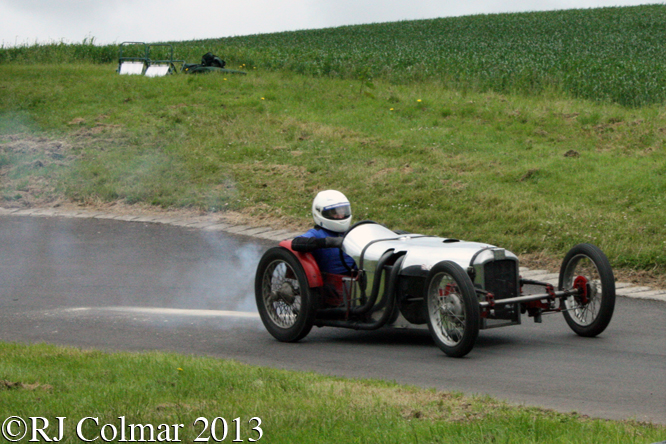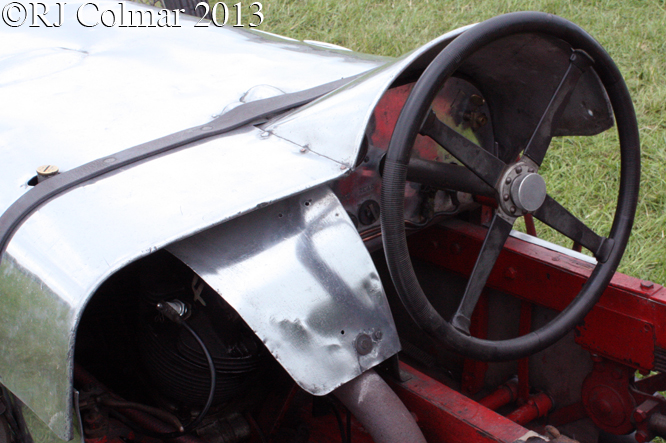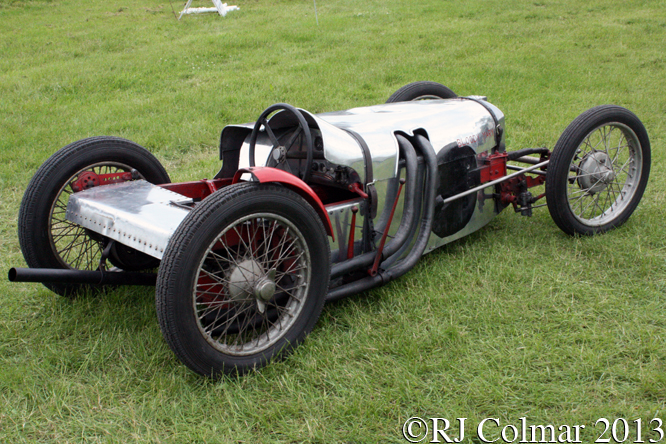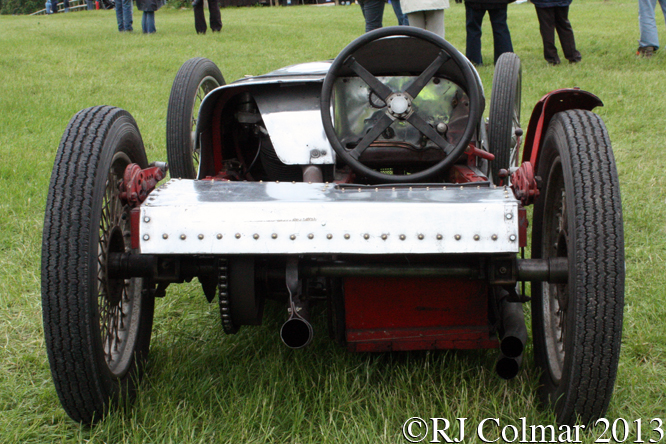A couple of weeks ago I headed over to Silverstone for the VSCC Easter Spring Start meeting during which 11 races took place.
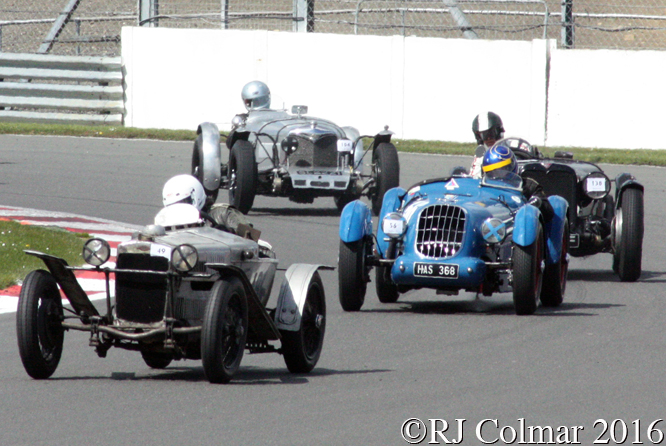
Dougal Cawley headed the opening lap of the Fox & Nichol Trophy in his GN Ford known as Piglet, but after 12 mins it was a surprised Rudiger Friedrichs who took the flag on his debut on the 1932 #138 Alvis Firefly seen above in third place.
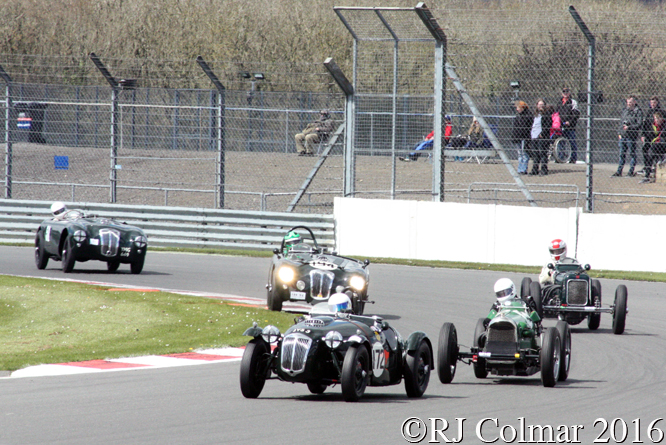
Eddie Lees won the race for Frazer Nash and GN cars from Martin Hunt both driving Frazer Nash’s, Tony Lees in COGNAC is seen above about to relieve Ian Dalglish in the #172 Frazer Nash of third place while Martin Stretton is seen with head lights blazing on a mission to make up ground from a fall to eight
place on lap 2, he finished an eventual 5th.
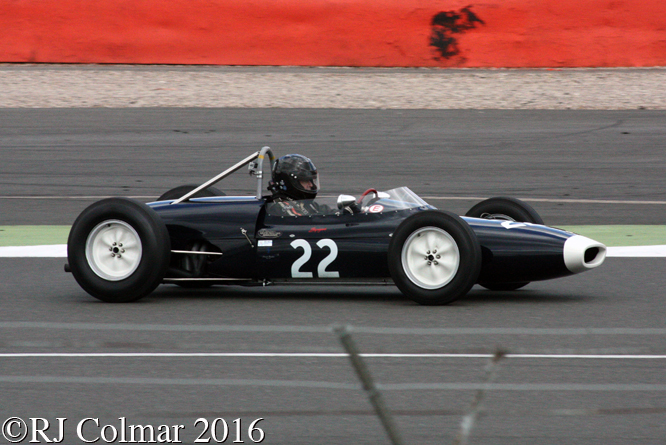
After a first corner in which Connaught driver Micheal Steele was sent airborne to the detriment of his car but fortunately without injury to the driver, the Pre 1966 HGPCA race for Grand Prix cars was restarted and Peter Horsman in his 1961 #22 2 1/2 litre Lotus Climax 18/21 led all the way after starting 3rd on the grid.
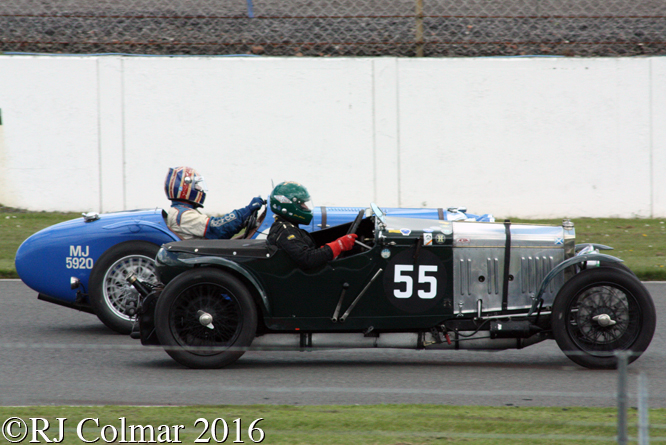
Chris Chilcott and Andy Bush are seen dicing for fourth on the opening lap of Race 4 for pre war sports cars, aboard Frazer Nash and Riley respectively, Chris never made it to the end of the first lap and Andy retired on lap 6 of the 8 lap race leaving Jo Blakeney – Edwards to win aboard her Frazer Nash.
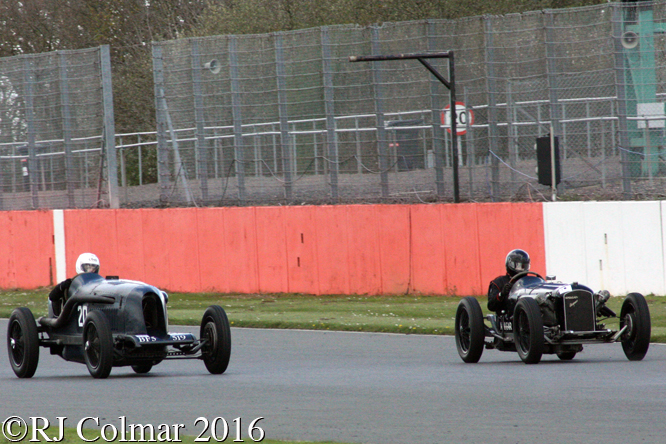
Seen blasting past Astrophysicist Robin Tuluie’s #20 Riley Menasco Pirate above is the GP Italia Trophy race winner Tom Walker in his Amilcar Hispano Special.
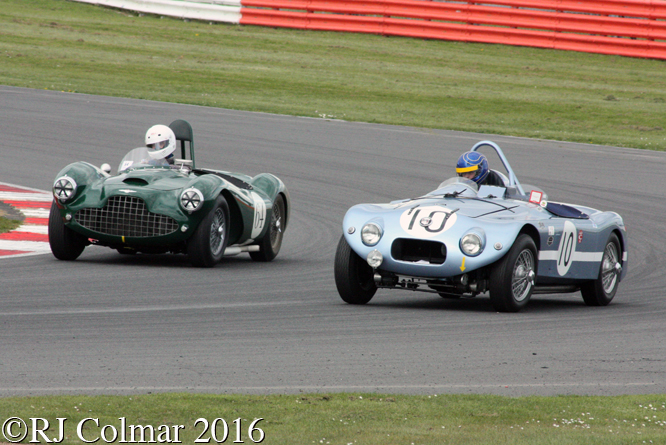
The longest race of the day, half an hour, was the Tom Cole Trophy Race for 1950’s sports cars, won by Darren McWhirtter in the 1954 #64 Lagonda V12 Le Mans seen lapping the 1952 #10 Nash Healey Le Mans driven by Sam Stretton.
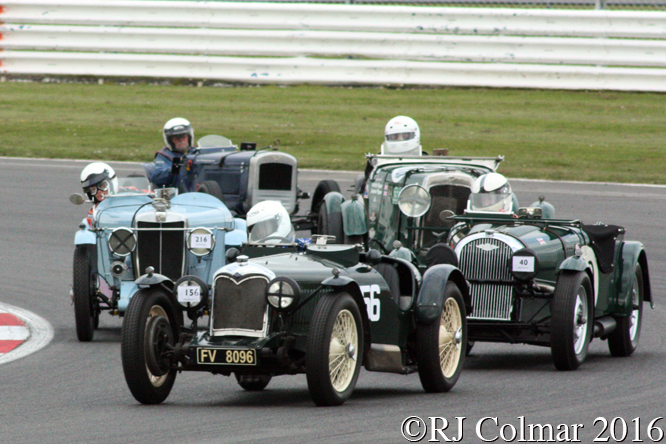
The longest race of the day was followed by the shortest, the 5 lap All Comers Short handicap that was won by James Whitmore in the 1934 #156 Riley 12/4 Special seen leading a gaggle of earlier starters above.
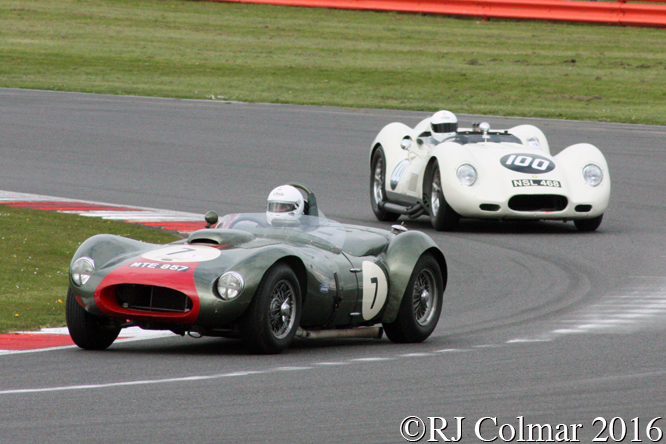
After early leader Lister driver Roberto Giordaneli out braked himself on the end of the Club straight on the opening lap, Tony Bianchi took the lead of the 50’s Sports and Sports Racing cars race in his Cadillac powered #7 Farrallac and holding off eventual winner Mark Lewis in his #100 Lister Chevrolet for four laps of the ten lap race.
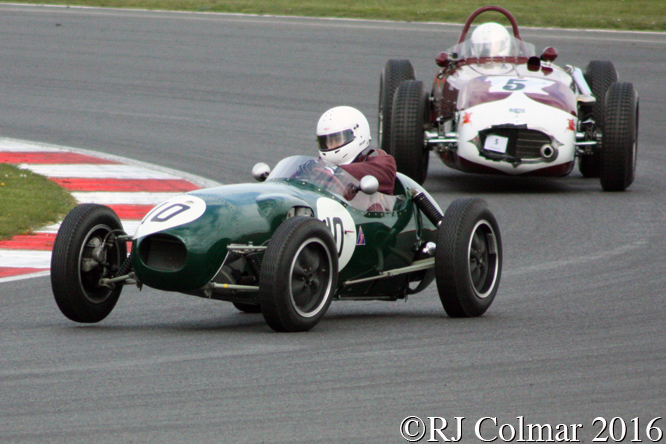
For the first 11 laps of the 13 lap Patrick Lindsey Memorial and Amschel Rothschild Trophy Andrew Smith looked set to finish 2nd in his #10 Lotus 12, seen above being followed by eventual third place finisher Frederick Harper in his Kurtis Roadster, until pole sitter and leader Philip Walker spun his Lotus 16 and had to settle for second.
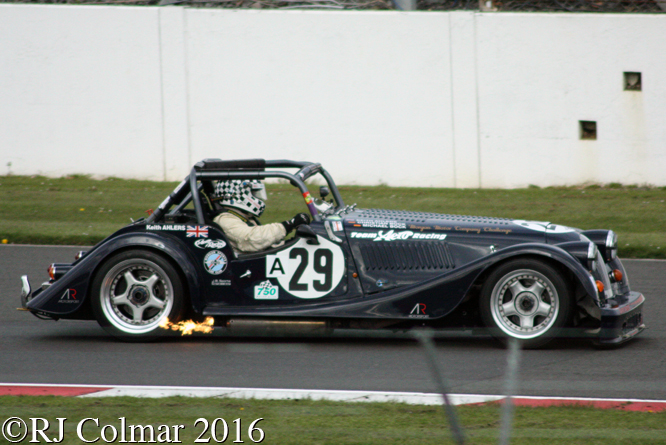
Keith Ahlers smoked the field in the the AR Motorsport Morgan Challenge Series race leading all 18 laps from pole and setting fastest lap of the race to win by nearly half a minute in his fire breathing #29 Morgan Plus 8.
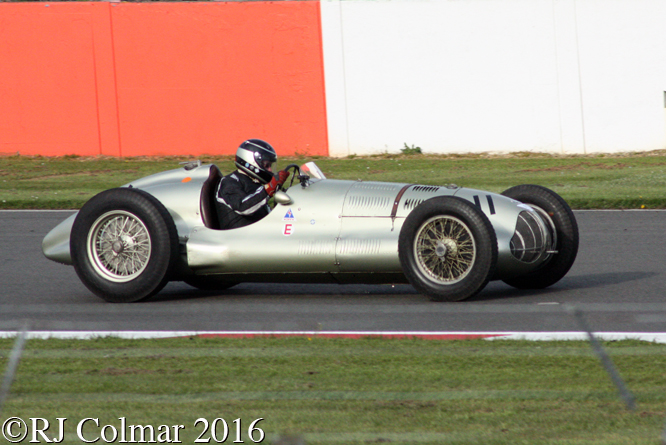
Three ERA’s took turns leading the final All Comers Scratch Race for Pre War cars but Terry Crabb aboard ERA 12C, Nick Topliss aboard ERA R4D both gave way to 3rd place starter Duncan Ricketts aboard the ERA E-Type GP1 who took the lead on lap 3 and help it to the finish 5 laps later.
Thanks for joining me on this “VSCC Spring Start” edition of “Gettin’ a li’l psycho on tyres” I hope you will join me again tomorrow when I’ll be looking at a Packard. Don’t forget to come back now !


